Rare Easter Rising photos show Dublin in rubble
- Published
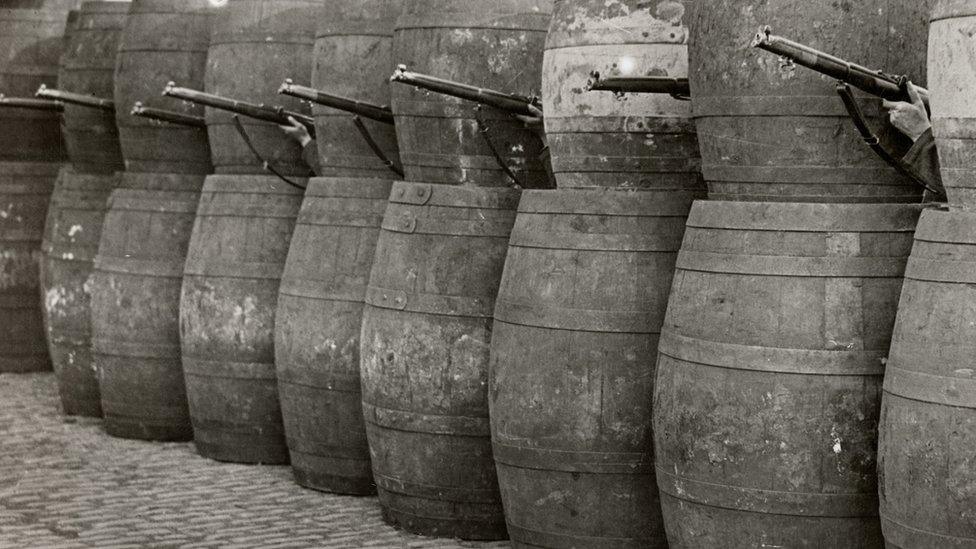
On Easter Monday 100 years ago, Irish Republicans occupied buildings in central Dublin and declared independence from the United Kingdom. Few photographs were taken of the short-lived Easter Rising, but an exhibition now on display in London provides a unique insight into the six days of fighting.
"Dublin was always called the second capital of the empire, and O'Connell Street was one of the great boulevards of Europe," says Luke Dodd, curator of the exhibition at the Photographer's Gallery.
"One of the things the insurgents had banked on was that the British authorities wouldn't bomb property - and boy, were they wrong. The entire centre of the city was completely eviscerated."
Although the British authorities were caught off guard by the rebellion, they quickly organised themselves. The rebels, who numbered about 1,500, had failed to capture Dublin's ports and railway stations so the British were able to bring in thousands of reinforcements. By the end of the week there were 16,000 troops in the city.
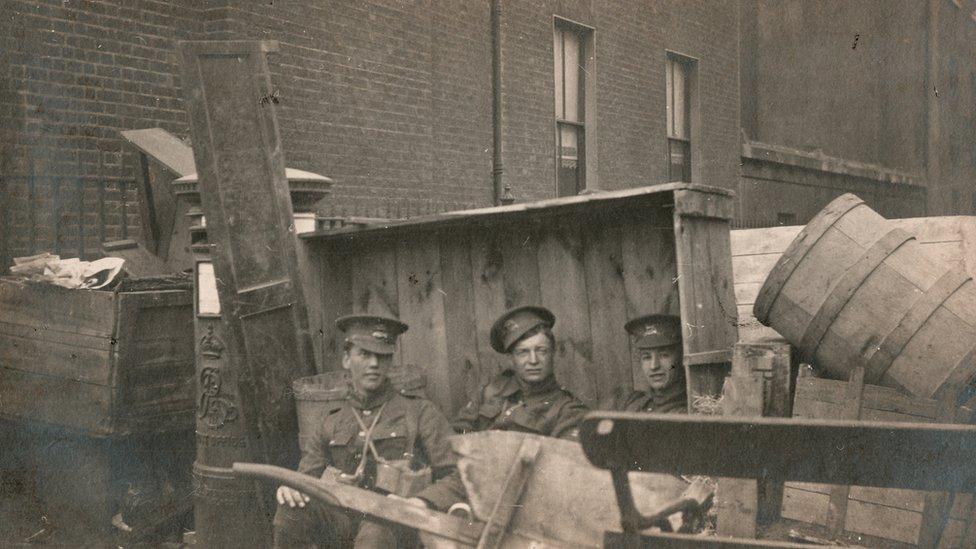
British troops at a barricade in Dublin during the rebellion
The British also pounded the city with naval guns mounted on a ship stationed on the River Liffey, as well as from artillery positions along the river bank.
About 450 people were killed and more than 2,500 wounded - most of them civilians.
Few photographers were willing to brave the streets during the bombardment, partly because of the physical dangers, but also because of wartime censorship.
"It was the height of World War One," says Dodd. "Anybody seen with a camera would have been arrested, because there was a blanket ban on any kind of publicity."
When the fighting was over however, Dubliners went out on to the streets in droves, and some keen amateur photographers took their box cameras with them.
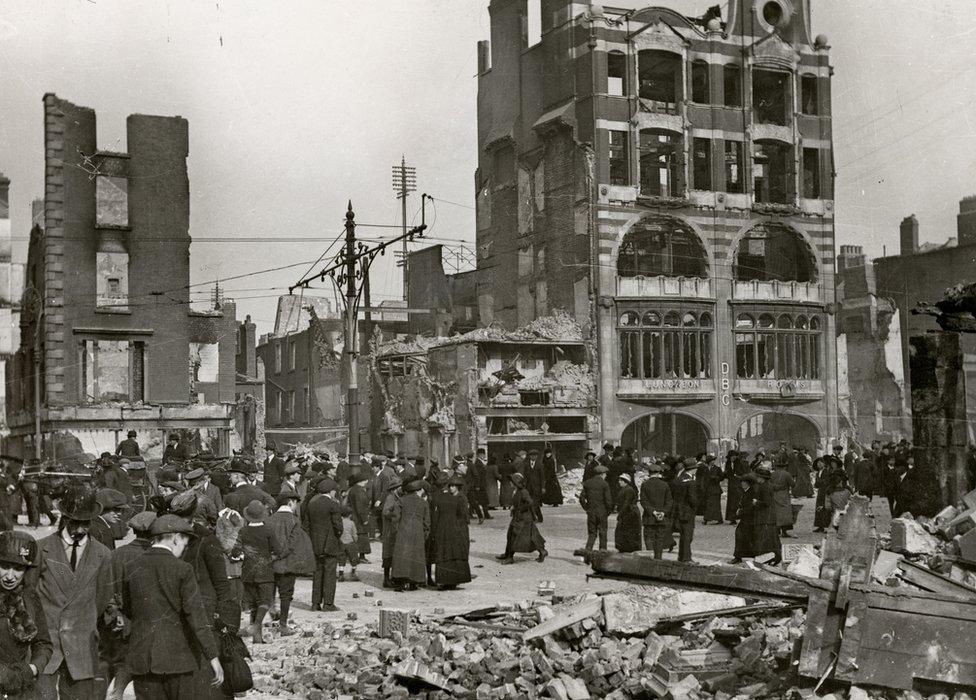
Crowds gather on O'Connell Street after the fighting to inspect the damage.
The General Post Office (GPO) building on O'Connell Street was a well-known landmark - it was here that the rebels read out their proclamation of independence and hoisted the flags of their new Irish republic.
But as historian Roy Foster writes in an essay accompanying the exhibition, the GPO, along with nearby buildings such as the Imperial Hotel, Clery's department store, and the favourite cafe of the literati, the DBC, became a battleground.
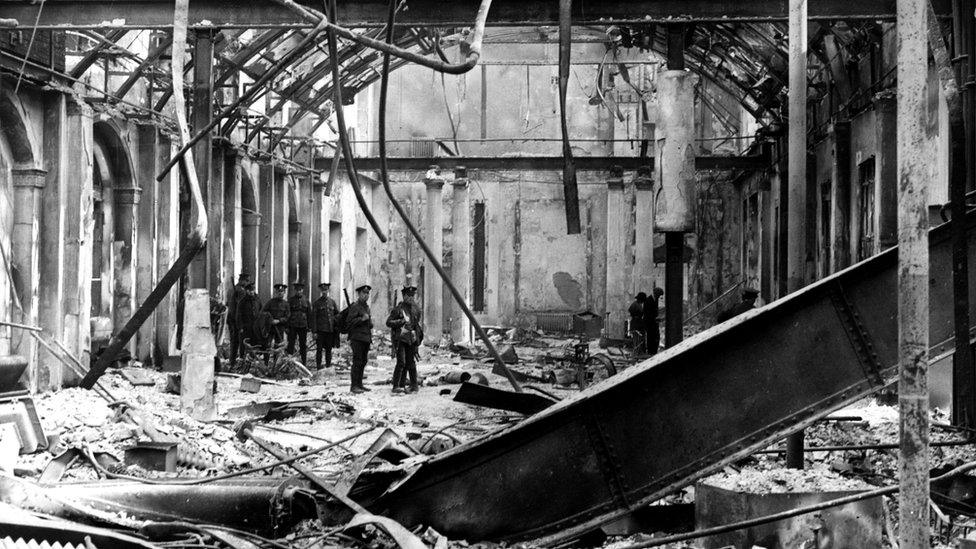
The bombed-out shell of the GPO, where the rebels had raised their flag
"Theatrical brio was part of the enterprise," he writes. "Several observers at first mistook the takeover of Dublin's centre by dashingly-dressed volunteers as the rehearsal for a play."
Most of the leaders of the rebellion were largely unknown to the public but that changed once 15 of them were sentenced to death.

Luke Dodd spoke to World Update on the BBC World Service - listen to his interview here

The manner in which leaders such as Patrick Pearse, Tom Clarke and James Connolly - who was tied to a chair and shot because he was too badly wounded to stand - were executed, provoked widespread anger in Ireland and beyond. This did more to foster sympathy for the rebellion and its aims than the Rising itself, and pictures of the rebel leaders taken before the Rising suddenly took on new meaning.
"Photography's unique capacity to immortalise its subjects made it an essential part of the nationalists' armoury," says Dodd.
The medium played a powerful role in establishing "nationalist archetypes such as 'hunger-striker', 'rebel', 'traitor' and 'spy'," he says.
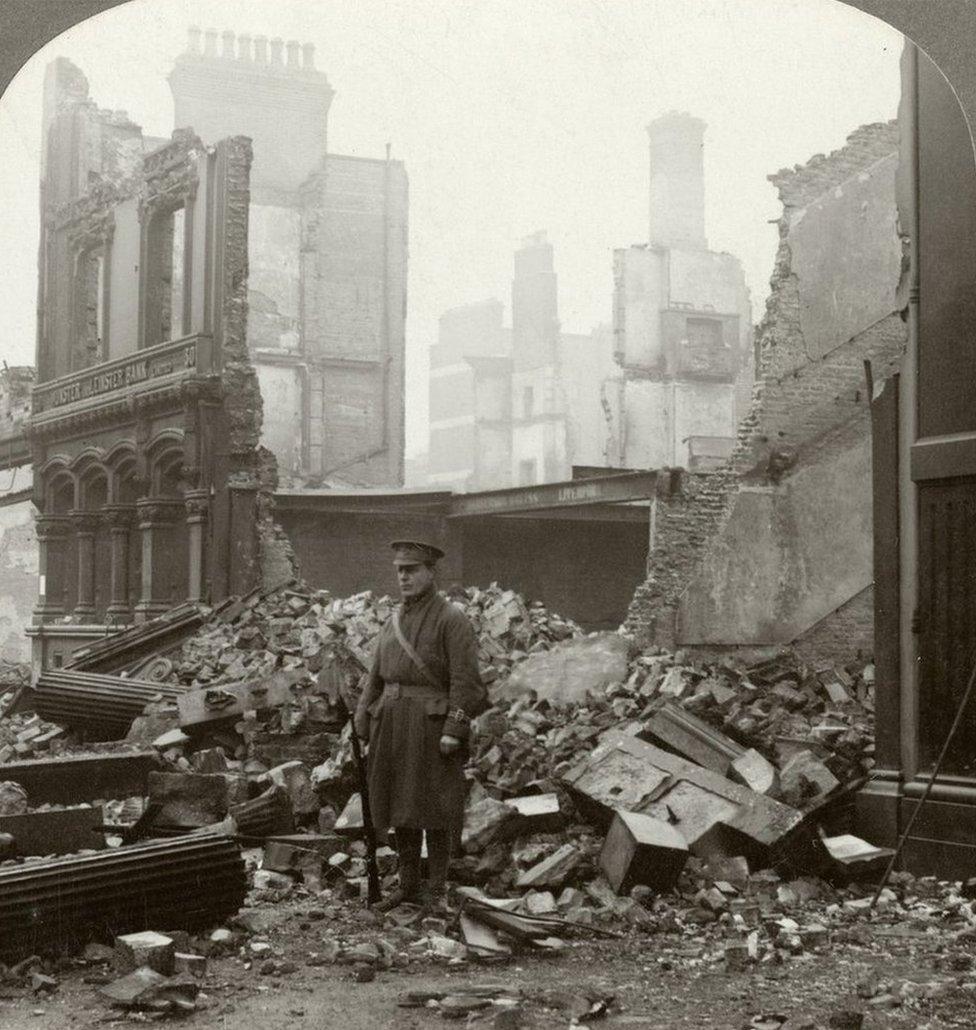
Among the rubble - this professional shot was posed after the fighting was over
All sides in this emerging struggle used photography for their own purposes, though.
Scenes of tenants being evicted at the behest of absentee landlords showed, first-hand, British oppression (even if the photos were occasionally staged).
Unionists in Northern Ireland, meanwhile, were quick to circulate images of the Ulster Volunteer Force - a militia dedicated to opposing Irish Home Rule, by force if necessary.
And the British themselves, concerned about rumours of German support for Irish independence, circulated images of loyal Irish soldiers.
Of all the images associated with the Easter Rising, a carefully posed photograph of Countess Constance Markievicz is one of the most striking. A member of the Irish establishment who was radicalised in London while a student at the Slade School of Art, Markievicz "went back to Ireland and dedicated herself to Irish republicanism", explains Dodd, "and had herself photographed just before the rising in a uniform she had pulled together".

Countess Constance Markievicz posing for the camera ahead of the Easter Rising
The countess fought during the Rising and was sentenced to death but because she was a woman, her sentence was commuted. She was interned, then granted an amnesty in 1917, along with thousands of others.
She ran for election to the British parliament, representing Sinn Fein, and became the first woman to be elected to the House of Commons.
In line with Sinn Fein's policy of abstention, she refused to take her seat at Westminster. "But she became this huge focus for independence," says Dodd.
"She was hugely important after the revolution as a rallying point. People like Countess Markievicz and others who lived through the 1916 rebellion were trenchantly opposed to partition."
Two months after the Rising, the Somme offensive in France saw the death of thousands of Irish soldiers. Troops from the 36th Irish division from Ulster suffered about 5,000 casualties, including about 2,000 dead on the first day alone. Their compatriots from the mainly Catholic 16th Irish division were introduced to the battle later in 1916. Between them, the two divisions were awarded five Victoria Crosses.
Subsequently, the events of 1916 were viewed very differently in northern and southern Ireland.
"World War One and the Somme become reified north of [today's] border and the Easter Rising is entirely ignored," says Dodd.
"South of the border the contribution of Irish men to the war effort in World War One is completely ignored and forgotten about, and instead 1916 becomes the great moment at which Irish independence becomes inevitable."
Most of the images in this article are on display at the Photographer's Gallery London until 3 April 2016.
Subscribe to the BBC News Magazine's email newsletter to get articles sent to your inbox.